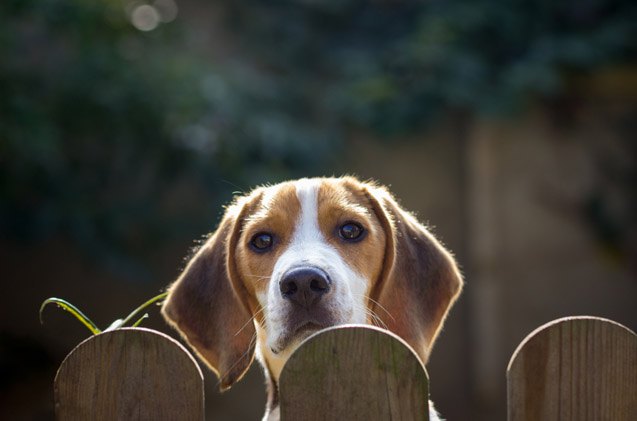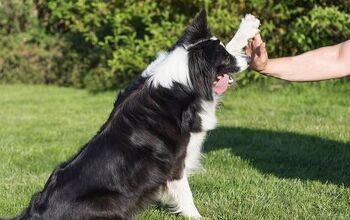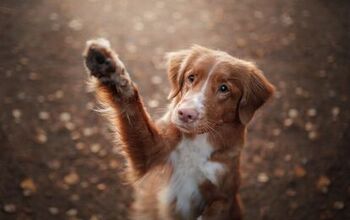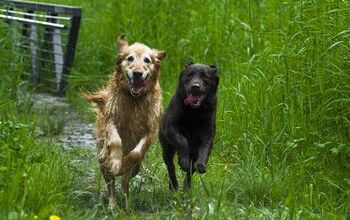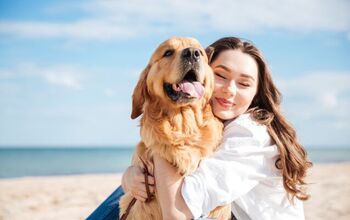How To Teach Your Dog Neighbor Etiquette

Well-behaved dogs are made, not born. To ensure your dog is a pleasure for everyone in the neighborhood to be around, a little training and management will go a long way to prevent bad habits from forming. Here are some ways to get started.
Barking
If you live in close proximity to others, a barking dog can be the spark to ignite neighbors’ anger. The goal shouldn’t be to totally eliminate barking, but rather to create a situation in which your dog doesn’t feel he has to bark. A few simple management strategies can cut down on the opportunities your dog has to sound his alarm:
- As you leave, give your dog a hollow food-dispensing toy filled with an amazing treat, like peanut butter. This will get your dog through the most stressful part of being left alone: your departure.
- Add white noise to areas where noises are likely to occur, such as near your apartment door or near a street-facing window. If your dog can’t hear it, he can’t bark at it. Likewise, close blinds or apply privacy window film to problematic windows.
- Make sure your dog has been thoroughly exercised, fed, and is ready for a nap before being left alone.
- Depending on your dog’s personality and age, consider daycare or playdates with other dogs while you’re out. This breaks the cycle of barking in your home, while giving your dog an outlet for his energy.
- Explain the situation to your neighbors, and if possible, involve them in the process of finding a solution. They can tell you if these strategies are cutting down on the noise. If not, it may indicate separation anxiety, in which case you should contact a qualified trainer.
Polite Greetings
Overly exuberant dogs that jump on people can present a real danger, or at least an annoyance. While some neighbors may tolerate or even encourage the jumping, others will surely not appreciate pawprints on their expensive suit. Learn how to impress all your neighbors, even the not-so-dog-friendly ones, by teaching your dog to politely greet people.
Curb Your Dog
Here in New York City, you see “Curb Your Dog” signs everywhere. But what does it mean? While some take it to mean your dog should only eliminate right at the curb, for most of us “curb” can be interpreted as “restrain”; you should make every effort to keep your dog, including his waste, away from neighbors’ lawns and the center of sidewalks. And, of course, pick up your dog’s poop and dispose of it properly.
Some dogs, it seems, will only go potty in the center of everything. If that sounds familiar, it’s time to do a little brushing up on potty training.
- Bring some really tasty treats on your walk. Little bits of “real” meat or cheese are perfect.
- Whenever your dog goes potty near the outer edge of the sidewalk (close to the curb), cheer and reward as soon as he’s finished. This will reinforce how great it is to go potty in that spot.
- If your dog clearly has to go but is hovering in the middle of the sidewalk or on a neighbor’s lawn, use a hand target or recall to call him over to you. Then, once you’ve encouraged him to move to the curb side, shorten your leash a bit and body block, so he can’t swerve back to the undesirable place. Now the only place to go potty is near the curb. When he finally does his business, cheer and reward.
By following these basic guidelines for neighbor etiquette, you’re not only improving your neighbors’ lives, but your dog’s life, too. A polite dog gets the benefit of greeting new people, going on long walks without frustrating anyone, and being invited to neighborhood barbecues.

Kate Naito, CPDT-KA, is a dog trainer at Doggie Academy in Brooklyn, NY, and author of the training book, "BKLN Manners." She draws upon her experience as an educator and dog trainer to apply positive training techniques to a challenging urban environment. Kate is a rescue advocate drawn to special-needs dogs and currently has two Chihuahua mixes, Batman and Beans.
More by Kate Naito



